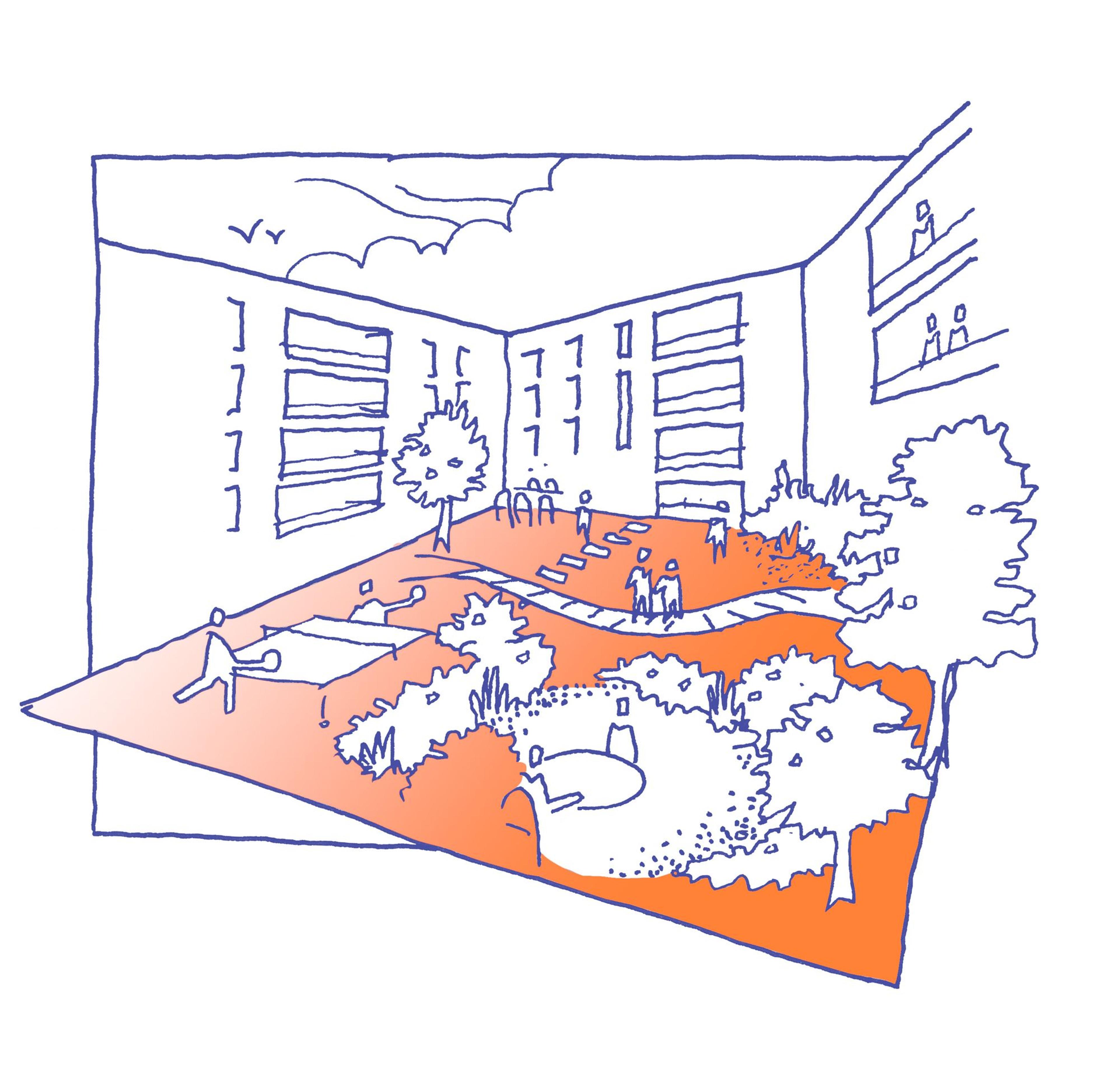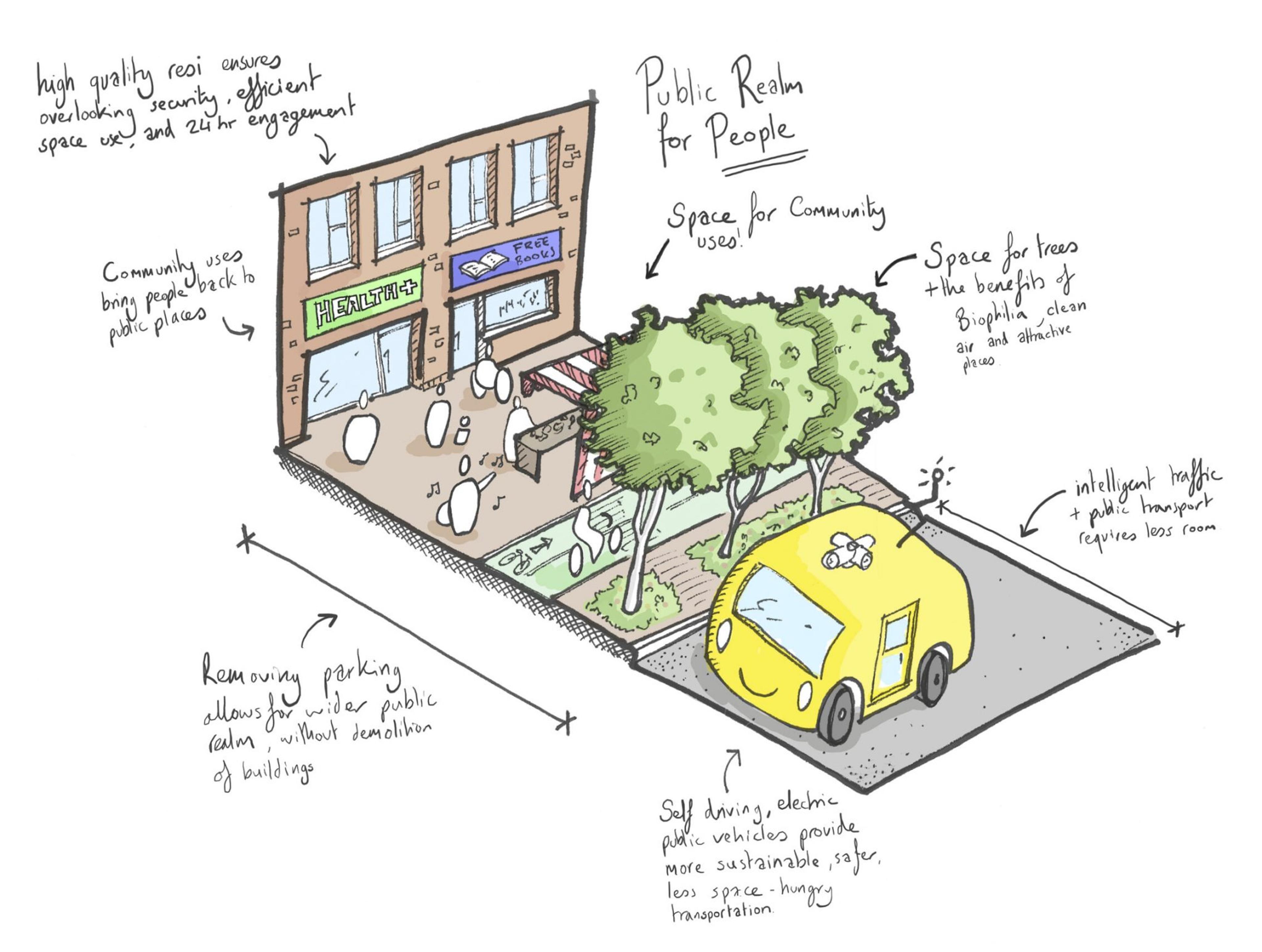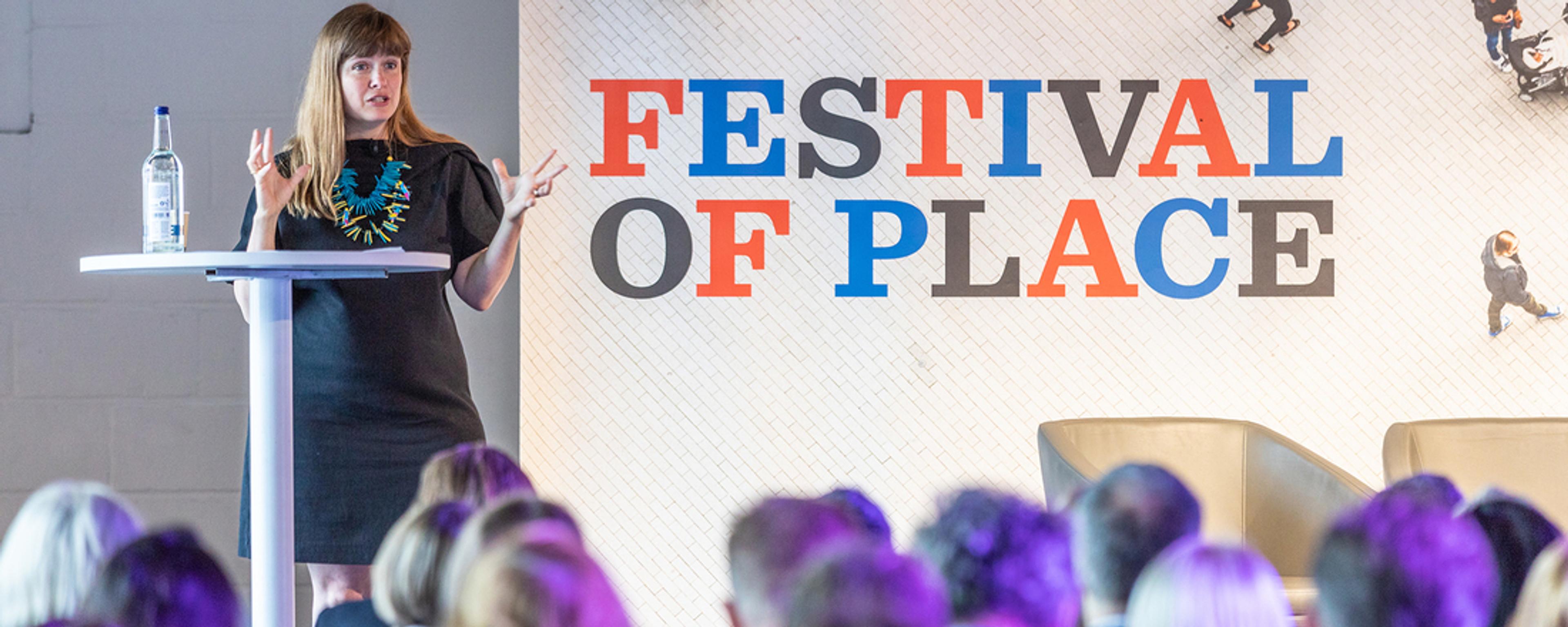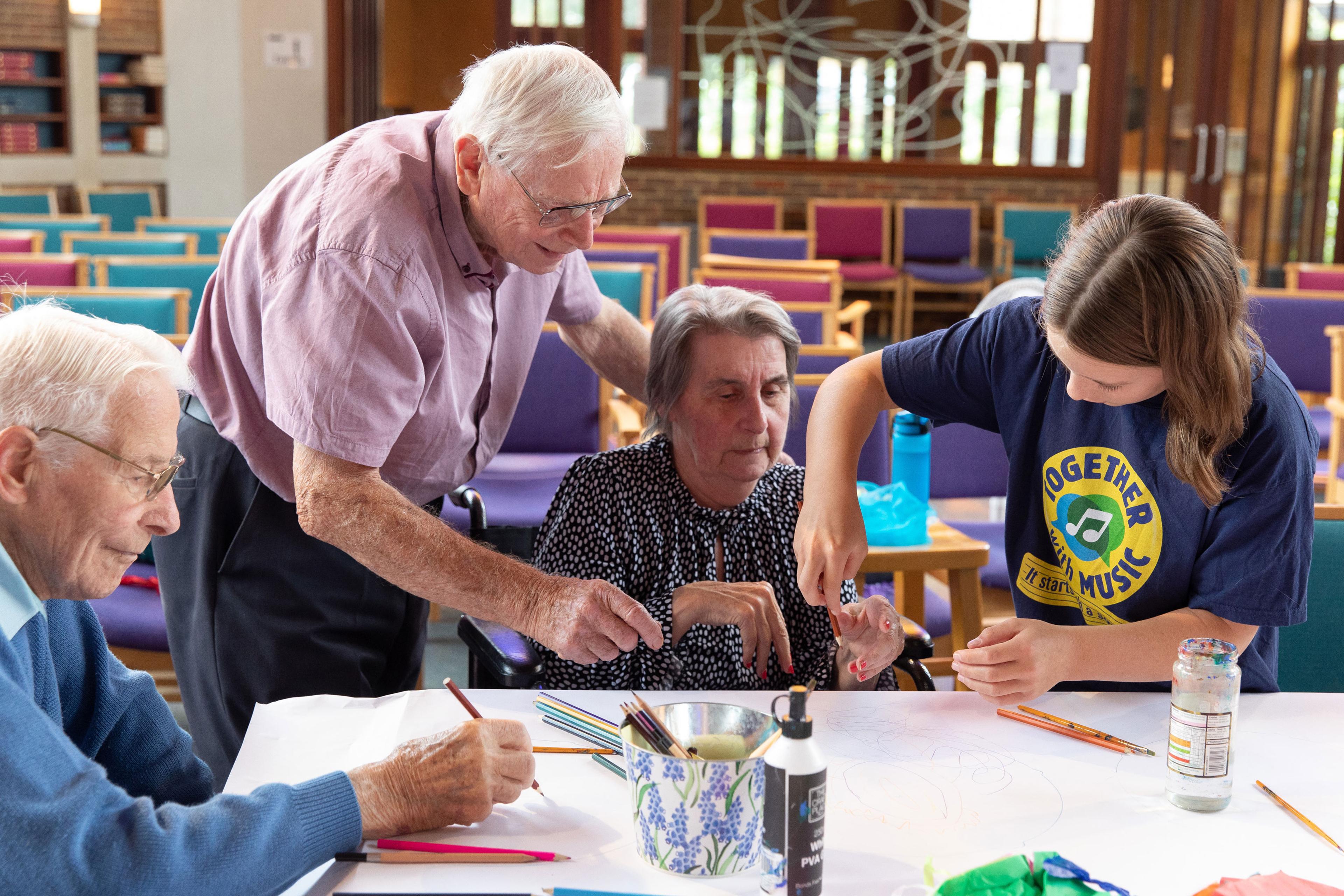Designing for disaster
by Peter Greaves, Future Spaces Foundation
2020
The press has been full of design responses to the COVID-19 pandemic, from futuristic office schemes to proposals for socially distanced public squares.
Doctors and scientists agree that we need to remain distant from one another and avoid contaminated surfaces to prevent this virus from spreading. If the previous decade has taught us anything, it’s that we should start listening to experts more. So, as designers we need to heed this advice for the immediate future – for example, by spreading out desks in our own workplaces, erecting screens between them and ensuring adequate facilities for regular hand-washing.
But should architects change our overall design approach on a permanent basis to combat the virus’s spread? Is it necessary to incorporate social distancing and contactless design in structures that won’t be built for at least two to five years?
By the time buildings designed in 2020 are inhabited, COVID-19 will likely be a terrible memory. Experts agree that the timeline for this crisis is in the region of one to five years, after which one of two things will have happened: either the incredible minds working away in labs like the Big Data Institute and the Old Road Campus Building in Oxford will have developed a successful vaccine, stopping the pandemic in its tracks, or enough people will have caught the illness and recovered that herd immunity is achieved. This timescale means that major interventions from those who deal with permanent structures of metal and stone will likely be too slow to address this particular crisis and could, in the meantime, dial back the clock on wellbeing in the built environment.
One of the best things to happen to office design in the last century has been the elimination of barriers and the addition of breakout areas and other spaces where colleagues can interact during and after work. Meanwhile, shops, restaurants, parks, pubs and other community infrastructure have evolved into crucial sites for social engagement among families, friends and neighbours. The suggestion that these places now be designed so individuals are never less than 2m apart and all surfaces are touch-free would make them far more sterile and solitary environments. We’ve already seen how the reduced use of these spaces has thrust millions of citizens into isolation and economic uncertainty. Should we start designing new infrastructure that reinforces these patterns for the next 25 to 50 years? Surely it’s not worth sacrificing the social gains of our shared spaces in service of a crisis that will eventually pass.

So what can designers do?
COVID-19 has inspired us to think more deeply about the changing ways we live and work, and about the importance of a built environment that provides safe, healthy spaces for citizens – a stance the Future Spaces Foundation has long encouraged. But while this crisis has been a crucial catalyst for conversations about the role of design in combatting disease, as well as the way we accommodate population growth and density, it’s worth bearing in mind that it’s impossible to design a building, or indeed any place, that is fully pandemic-proof. This is because no pandemic looks the same. The next one won’t necessarily follow the same rules as COVID-19. Some viruses stay in the air for longer, which would make social distancing useless. Others spread through direct bodily contact or exchange of fluids, making touch-free operation irrelevant. Some viruses spread through mechanical ventilation, others through natural ventilation. Some thrive in warm and wet conditions, others cold and dry. Future pandemics are sure to come, but we can’t predict what they’ll look like.
Instead of focusing future designs on their ability to combat COVID specifically, and possibly limiting their longevity and social benefit in the process, we should seek to devise spaces with as much flexibility and adaptability as possible. Whether it’s a wide structural grid, easily replaceable facade elements, or moveable walls and furniture, flexibility engenders resilience. This will give us the best chance of combatting the various pressures a disease might toss up while also ensuring the buildings of the future serve the people they’re designed for. The case for flexible design existed far before COVID-19 – this is our chance to accelerate it.
Consider an office building with innovative furniture and accessible services infrastructure on the ceiling: the interiors could easily be rearranged to allow the 2m separation the current crisis requires, but equally they could be adapted to take in more people if needed, or even become a server farm and occasional meeting room for a home-based workforce – all with minimal financial and carbon impact.
This kind of long-term thinking is key. It’s not just pandemics we have to consider; the entire way we live and work is changing rapidly, with technology, climate change and consumer trends all playing a significant role. The more inflexible buildings are, the more swiftly they become obsolete. Structures that can quickly and cheaply adapt to changing circumstances will remain standing for far longer, making the most of the carbon investment that went into their construction.
That’s not to say there aren’t clever, effective design measures we can and should adopt in the meantime to keep people safe from COVID-19. We’ve seen public squares repurpose road works barriers to create appropriately distanced spaces, supermarkets tape together traffic cones to ensure safe queuing, and factories rearrange equipment to enable safe working. As far as temporary solutions go, these measures not only function to keep people safe, but also have a low impact both financially and in terms of carbon footprint – crucial long-term considerations.
What else can designers take away from this crisis?
Both lung health and body mass index (BMI) have emerged as important risk factors for COVID-19, illuminating the human cost of maintaining traffic-heavy cities. It’s more important than ever that we reduce pollution and improve cycling and pedestrian facilities in our urban environments, not just for the sake of the planet but for people’s health too. Physical health is hugely impacted by design, as highlighted in the Foundation’s Vital Connections research; we should use this crisis to underscore the need for people-friendly design in all spheres, from housing to transport.

The pandemic has also highlighted the crucial influence of our built environment on mental health. Human contact is a fundamental need, and its absence in lockdown has been devastating for many, especially those who live alone. As the Foundation’s Kinship in the City report notes, loneliness can increases people’s overall risk of death by as much as 30%. As we respond to this crisis, we should pay attention to the effects of social isolation to avoid replacing one significant health problem with another. We should also draw attention to those who lived lonely lives before lockdown came along and ensure our designs prioritise the needs of these vulnerable citizens.
Finally, we should bear in mind the massive social and economic disruption of this crisis as we turn our attention to another one we know is looming. Climate change is one of the most pressing problems facing humanity today, and designers have a huge role to play in addressing it. By insisting on greener, more biodiverse and sustainable developments, we as an industry can help avert a global disaster – one with even higher costs than COVID-19.
Of course, we must respect the need for sanitisation and social distancing in the short term, a challenge that designers around the world have risen to with admirable speed and ingenuity. In time, however, this pandemic could become a springboard for design that actually brings people together – clean, vibrant, green, tactile spaces where people can meet, play, eat, work and live, all while safely enjoying one another’s company. As ever, the aim is to shape cities that are healthy, happy places for us all.






